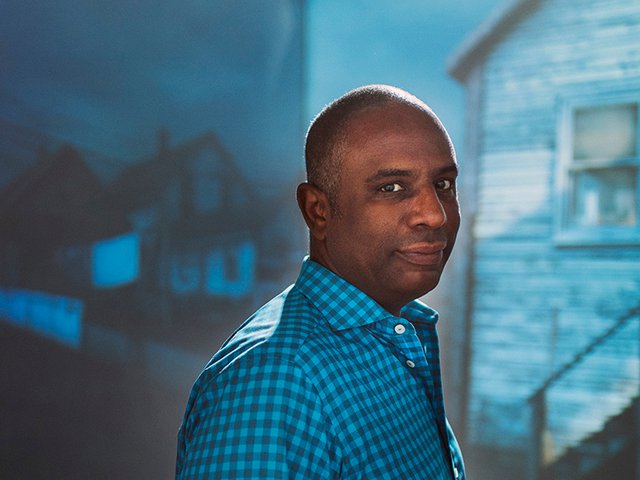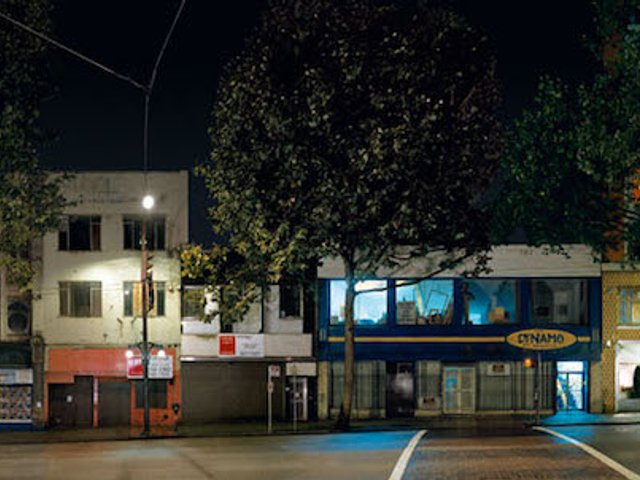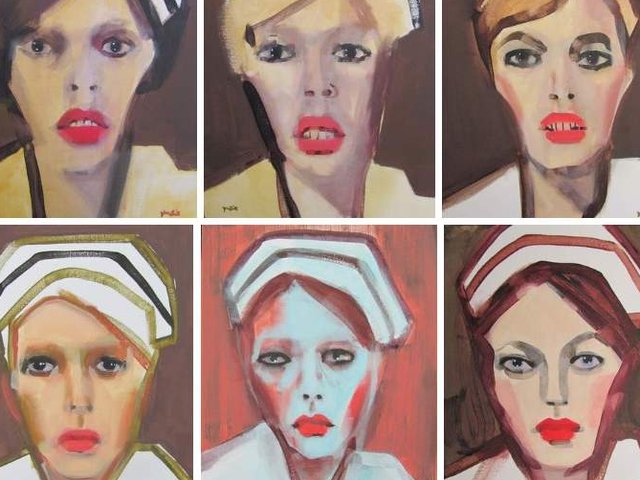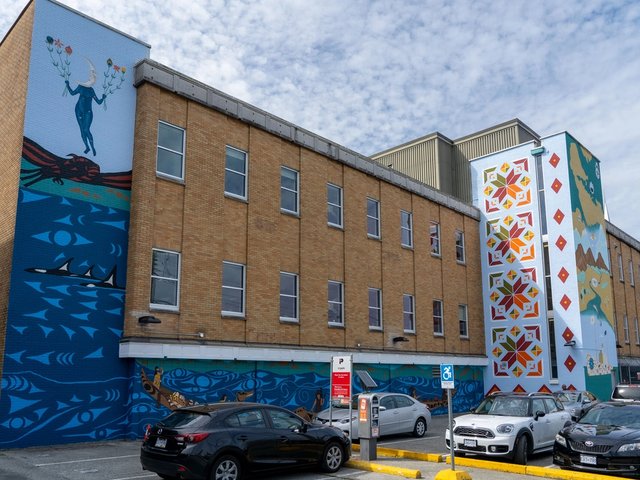On a wet, windy West Coast day, rain lashes at the old cabin that was once home to Vancouver artists Carole Itter and Al Neil. Itter, now 82, tells The Art Newspaper that this day (16 November), the official opening of the Blue Cabin Floating Artist Residency in its new home across from Vancouver’s Maritime Museum, happens to be the seventh anniversary of the death of her partner Neil.
“It’s a magical place,” she says of the 300 sq. ft cabin that has migrated from Coal Harbour to North Vancouver to Richmond and now to Kitsilano. “When children come here their eyes light up. They want to play in it—it’s built to their scale.”
Happily, for wintry days like this, a new float home designed by the artist Germaine Koh and the architect Marko Simcic is adjacent to the old cabin. This will be home to multidisciplinary artists both local and international, each of whom will spend six to eight weeks on site engaged in community-oriented art and employing the next-door cabin as a studio.
“Nobody owned the cabin—located on traditional Tsleil-Waututh (səlilwətaɬ) territory—formally and it existed that way throughout the 20th century in one of the most speculative real estate markets in North America, without any official ownership papers,” says Glen Alteen, the former director of Grunt Gallery, who together with Esther Rausenberg of Creative Cultural Collaborations and Barbara Cole of Other Sights for Artists’ Projects, helped conceive ways to preserve the cabin as part of a residency when the Port of Vancouver evicted Neil and Itter in 2015. “And it still exists like that—resisting ownership. We haven’t really claimed it—it’s just been relocated.”
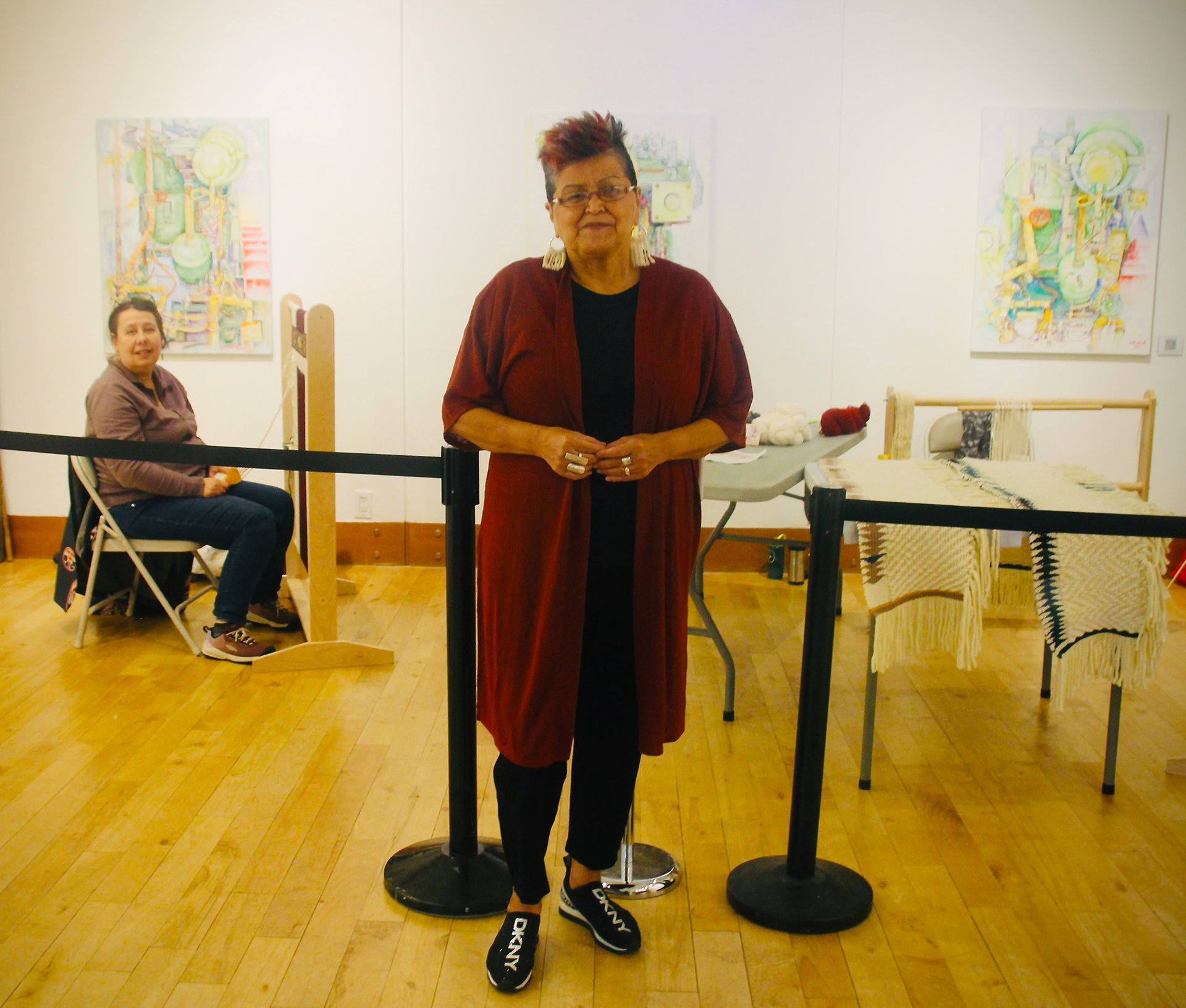
The artist and weaver Chief Janice George (centre), who, along with Buddy Joseph, was the most recent resident of the Blue Cabin Floating Artist Residency Photo by Hadani Ditmars
The idea to create a floating artist residency was both a response to the lack of affordable housing in the city and a vehicle for sustaining the memory of the city’s foreshores—with their histories of labour, immigrant, squatter and Indigenous communities.
The cabin’s former location in Cates Park, North Vancouver was a jurisdictional grey zone, where it was part of a long line of squatter communities along Vancouver’s Burrard Inlet foreshore that was at once 1,000 strong. The structures housed a mix of the urban poor, working-class people who wanted to be close to their jobs near the water and bohemian artists. The English author Malcolm Lowry at one time lived a few hundred metres away from the Cates Park location of the cabin, which was originally built as a float home by a Norwegian craftsman who worked in Coal Harbour in 1927, close to downtown Vancouver. The squatters’ community in Cates Park was established in the 1920s but all the cabins burned down in the 50s—except for the Blue Cabin.
Neil was known for his work as an experimental jazz musician, artist and writer. Together with Itter—an artist, writer and filmmaker who won the 2017 Audain Award—they pioneered an idiosyncratic school of anti-consumerist found object assemblage.
“He went to war at age 18,” Itter says, “and it was a big trauma for him.” After enduring the slaughter on the beaches of Normandy, he had “ten lost years” when he returned home, she says. Neil first went to the Blue Cabin in 1966, after the West End home he occupied with his then-wife burned down. Itter moved in in 1978 and describes the seaside cabin as a kind of “paradise”. It served as a generative site for the pair’s art and music until their eviction in 2015.
In 2015, when Polygon Homes acquired the barge company and had to remediate the port land, the cabin was part of the deal. Itter and Neil began the formidable task of clearing out decades of found assemblage work and artistic ephemera. The arts patron and Polygon chief executive Michael Audain allowed for a road to be built into the site and the cabin was transported to a storage area.
In 2017, the cabin was deconstructed and rebuilt piece by piece by the local artists Jeremy and Su Borsos, whose practice focusses on recycled materials. They took out a wall, creating a single open space, replaced a rotting cedar ceiling beam and fixed holes in the old maple flooring. After the float home was created by Koh and Simcic in 2018, the residency officially opened in 2019, moored at the Plaza of Nations Building in northeast False Creek. It was relocated to a barge in suburban Steveston in 2022 and towed together with the new residency to its Kitsilano location last month.
A brush with… Stan Douglas
In August of next year, Itter herself will be an artist-in-residence here and, in a full circle moment, will select art, furniture and ephemera culled from the collection of objects cleared from the cabin in 2015 and re-situate them in the cabin. Her goal is to recreate an image of the cabin taken by Stan Douglas in 2009—a print of which hangs at the far end of the refurbished cabin.
Her project is still in the planning stages, she says, but she will be “telling lots of stories from the old days”.
Alteen sums up Neil’s legacy thusly: “Cross-disciplinary and aggressively non-commercial, his spirit is important to this place, reverberating in many different communities and influencing so much of what came after him.”



